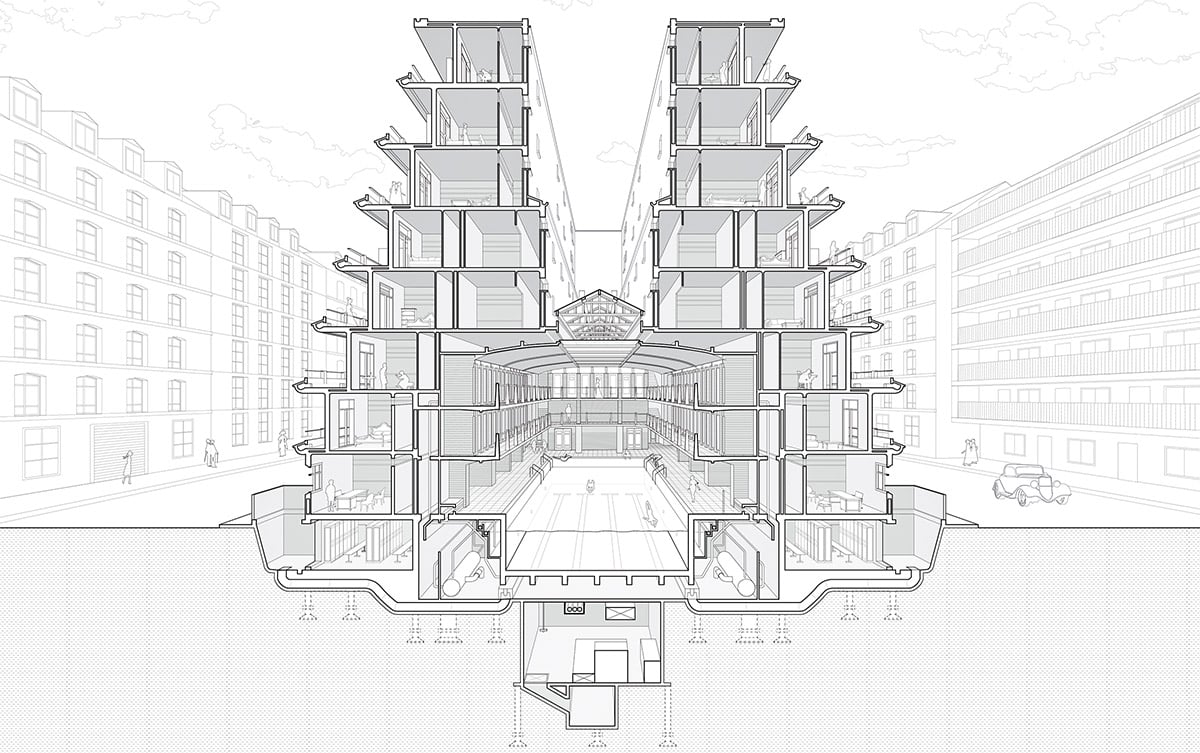Login
Registered users

The Alfred Taubman College of Architecture and Urban Planning at the University of Michigan inaugurated their new wing recently. Following a request for proposals organized by the school’s Dean at the time, Monica Ponce de Leon, it was awarded to Prescot Scott Cohen. Scott Cohen made his reputation with his addition to the Tel Aviv Museum some years ago. There, he impressed us with an exuberant spatial well of light, with a series of galleries extended in all directions. Here at Ann Arbor is Cohen’s masterpiece on his home ground. It is full of natural light with a cascading staircase on the perimeter of a large pentagon shaped forum with a right angle at the point in which the new building meets with the old. The straight lines of the preexisting building continue into the new building at the ground level with a light metal bridge above, which connects the two buildings at the second level. The new and the old are seamlessly interwoven together, intertwined. Indeed it was one of the key challenges, how to connect the new wing to the old modernist building designed by Robert S. Swanson in the seventies. So much more of a challenge when the old building is in two levels with a large garden that occupies the entire center of the second floor. The new building respects the campus rule of using bricks, but Cohen selected darker, smaller format, which made it possible for him to turn mere cladding in to a tapestry of carefully textured patterns of bricks, rarely seen in the projects of our time. It gives a wink to Saarinen’s Music Building which includes lattices of open brick screen at the end of his structure; it is beautifully matched with Cohen’s contribution. Not only do students benefit from such large apertures, windows which are sometimes from floor to ceiling and many in varied sizes, but a great deal of natural light is poured from the serrated roof in a style which echoes Le Corbusier’s designed studio for Amédée...
Digital
Printed

Seven speculations on the future of section
Marc Tsurumaki
Section, as both a representational technique and a series of architectural practices pertaining to the vertical organization of our buildings and cit...
Dar Es Salaam MAPPING
The CityPlan once again goes to sub-Saharan Africa. After Luanda, capital of Angola, we now look at Dar es Salaam. Although now the former capital of ...
A NEW CHAPTER IN DAR ES SALAAM’S CITY TRANSFORMATION
A city poised for change Dar es Salaam is a vibrant and fast growing East African coastal city of 5.7 million people (growth rate projections for 2017...